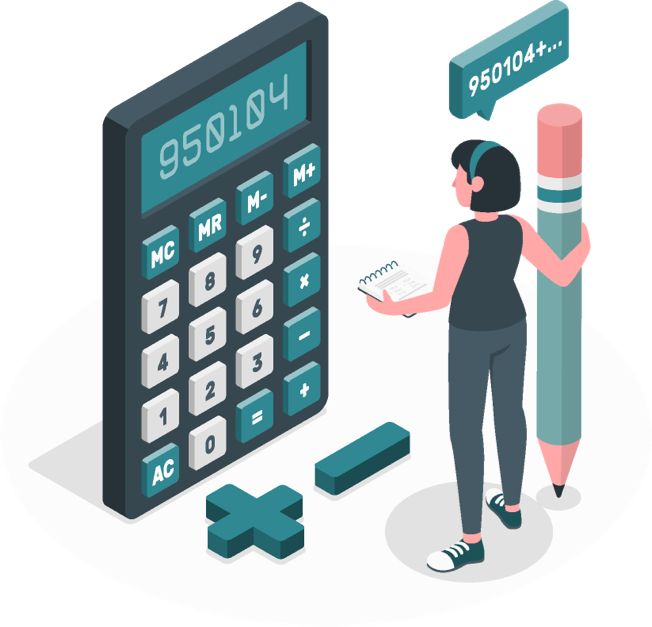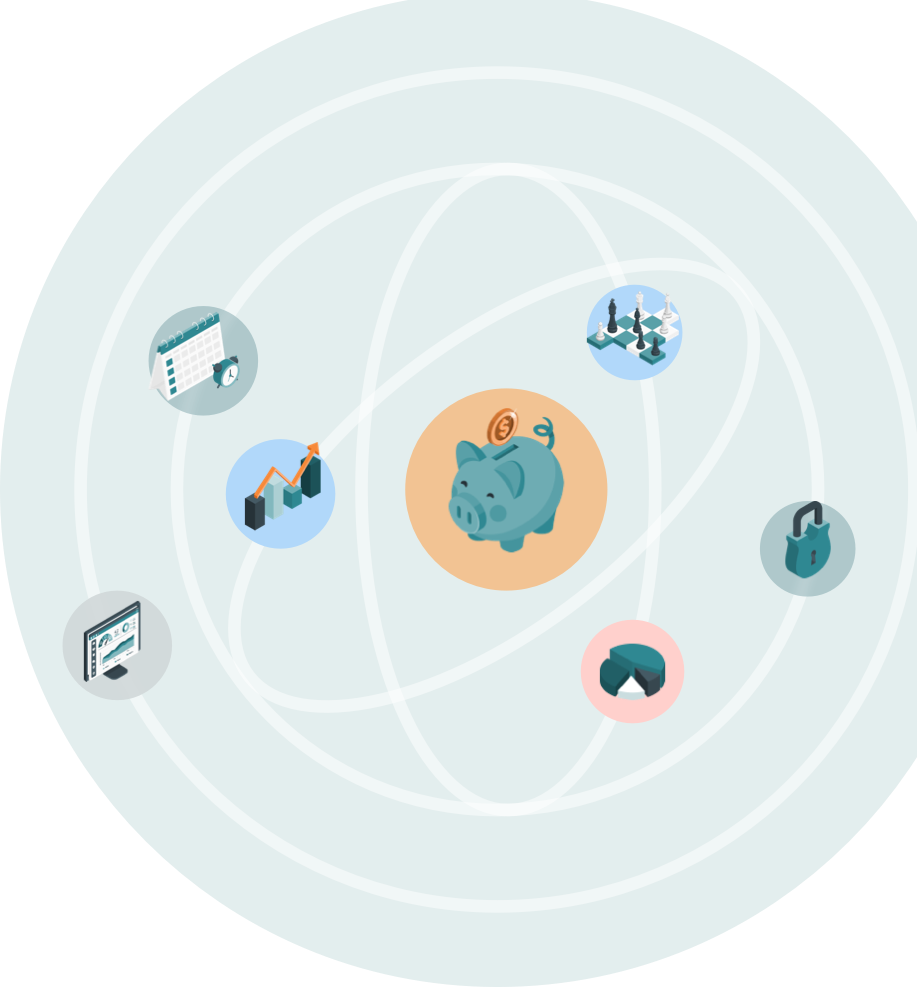Sometimes saving for retirement can feel like trying to cook a recipe without clear instructions. You feel like the recipe is smudged and you’re not sure about the ingredients. You might be thinking: “Am I saving enough? What’s the right number for me? Should I save with pretax or Roth? Stocks or bonds?”
But just like cooking, a little guidance makes the process easier. Having the right “recipe” for retirement can turn that stress into confidence.
Take a moment to think about your retirement dish:
What kind of lifestyle do you want to enjoy when you retire?
Do you want to retire early, or do you want to work past age 65?
Will you flavor your future with Roth, pretax, or a mix of both?
This October, we’re celebrating National Retirement Security Month and hosting four webinars to help you cook with confidence and achieve your retirement goals. Each session is 30 minutes with a presentation followed by time for your questions. Sign up to get your spot.
Special sessions for October
Tuesday, Oct. 7 – Get your financial ingredients in order
Just like cooking, retirement success starts with prep. Find out how to secure your online account, set up beneficiaries and discover some ingredients you might be missing.
Tuesday, Oct. 14 – The secret sauce of pensions
Defined benefit pensions in the U.S. are rare to have nowadays. Find out what it means to have a pension and how you can increase it.
Tuesday, Oct. 21 – A well-seasoned retirement
A retirement recipe has lots of ingredients: Social Security, pension, savings and investments. Explore whether boosting your savings now could help reduce the risk of running out of money later.
Tuesday, Oct. 28 – Turn up the heat on your savings: choosing how to add to your DCP
Just like adding spices to a recipe, small increases to your DCP contributions can have a big impact. Discover options for saving more, and explore the difference between pretax and Roth contributions.
Sign up
Bonus! Home recipes from DRS team members:
Pumpkin French toast casserole
Submitted by Angelina, Retirement Specialist
Print version
Ingredients
Two loaves of bread (we use Challah or Sweet Hawaiian rolls)
1 cup pumpkin puree
6-8 eggs
2-3 cups whole milk or heavy cream
1 can sweetened condensed milk
Middle
2, 8oz packages cream cheese
1 cup powdered sugar
Topping
1 tablespoon butter
1 cup pecans
½ cup brown sugar
Directions
Preheat oven to 350 degrees. Take cream cheese out of the fridge and set aside. Break bread up into cubes and use ½ of the cubes to cover the bottom of a 9×13” casserole dish. In the mixing bowl, whisk together eggs, whole milk, and pumpkin puree. Add bread cubes to the mixture. Pour ½ of the mixture over the bread cubes in the casserole dish. Leave other ½ of mixture in the mixing bowl.
Heat 1 tablespoon butter in a small saucepan on medium heat. Add brown sugar and stir until melted/caramel-y in appearance. Turn off heat. Stir pecans into brown sugar/butter mixture. Remove pan from burner and set aside.
Mix cream cheese and powdered sugar together with your mixer. Drop dollops of cream cheese onto the bread/egg mixture in the casserole dish and then spread with spatula.
Pour the rest of the bread cubes/egg mixture on top of the cream cheese. Pour the sugared pecans on top of the bread cube/egg mixture.
Bake for 40-45 minutes. Once out of the oven let cool for approximately 30 minutes.
Red lentil dal
Submitted by Seth, Retirement Readiness Director
Print version
Ingredients
1 cup red or yellow lentils
3 cups water
3 fresh tomatoes
2 teaspoons vegetable oil
½ cup finely chopped white or yellow onion
2 cloves garlic, finely chopped
2 teaspoons five spice, panch phoron: (½ teaspoon nigella seeds or black [or white] sesame seeds, ½ teaspoon cumin seeds, ½ teaspoon fennel seeds, ½ teaspoon mustard seeds, ½ teaspoon fenugreek seeds)
1 bay leaf
1 teaspoon turmeric
1 teaspoon kosher salt
1 lime, juiced (about 2 tablespoons)
8 sprigs cilantro, de-stemmed, chopped
Cooked basmati rice (optional)
Directions
Rinse lentils with cold water. Add to medium saucepan with 3 cups water. Bring to boil. Reduce heat, cover and simmer 10 minutes or until lentils are soft.
While lentils are cooking, bring a separate pot of water to boil. Score tomato peels with a sharp knife in the shape of an “X”. Add tomatoes to boiling water and blanch for one minute. Remove tomatoes to cool and peel them. Cut out and discard the stem ends. Chop or mash tomatoes and set aside.
When lentils have cooked at least 5 minutes, prepare the onions and spices. In a medium saucepan, heat the oil over medium heat. Add chopped onions. Cook until translucent, about 3 minutes. Add chopped garlic and cook for 1 minute more, stirring continuously. Add five spice mix (panch phoron). Cook and stir another 2-3 minutes. Add bay leaf and turmeric. Stir.
Add cooked lentils (with cooking water) to onions and spices. Add salt. Cook for 10 minutes.
Add lime juice and tomatoes. Cook 3-5 minutes. Add salt to taste. Stir in cilantro and remove from heat. Garnish with more cilantro. Serve with basmati rice or naan bread.
Giant chewy chocolate chip cookies
Submitted by Claire, Forms and Records Analyst
Print version
Ingredients
2 cups all-purpose flour
½ teaspoon baking soda
½ teaspoon salt
1 cup packed brown sugar
¾ cup butter, melted
½ cup granulated sugar
1 large egg
1 egg yolk
1 tablespoon vanilla
2 cups chocolate chips
Directions
Preheat oven to 325 degrees (this is lower than a normal cookie temp). Line cookie sheets with parchment.
Sift flour, baking soda and salt together in a bowl. Beat brown sugar, melted butter and granulated sugar with a mixer until smooth.
Beat in egg, egg yolk, and vanilla until light and creamy (approx. 2 minutes). Add flour mixture and stir until dough is just combined. Add chocolate chips.
Using a large cookie scoop, drop spoonfuls of dough 3” apart onto the prepared baking sheet. 6 spoonfuls of dough should fit comfortably on a standard sheet.
Bake 15-17 minutes. Time may vary based on oven. This is longer than a standard cookie bake time. The oven temp and the dough size combine to make a chewy and soft cookie with crisp edges.
Vegetable soup with smoked beef ribs
Submitted by Chanel, Communications Consultant
Print version
Ingredients
1/3 cup olive oil
¼ teaspoon red pepper flakes (optional)
1 large onion
3 large cloves of garlic, minced
1½ cups celery
2 cups carrots, any color
Several sprigs of rosemary and/or thyme (or 1 teaspoon each dried)
2-3 cups red potatoes, diced
1½ to 2 lbs. of smoked beef ribs on the bone, with meat separated and chopped into bite-sized pieces (you can also use leftover meat like steak, brisket, roast or even cooked ground beef)
2 cans diced tomatoes
6-8 cups beef broth
Directions
Dice onion and add to large pot with olive oil, garlic, herbs and red pepper flakes, if you choose. Sauté until translucent and add beef ribs (without meat) along with diced celery and carrot. When vegetables begin to soften, add diced potatoes and broth. Bring to a simmer and add tomatoes. Simmer for 20-30 minutes, until potatoes are cooked through. Add meat and adjust seasonings.
This recipe is very flexible. You can add or subtract any other veggies and it’s still delicious!
Financial resources to cook up your perfect retirement recipe
DCP calculator
Use the DCP calculator to see an estimate of how much you’ll have in retirement with your current contribution. If you ever wished that you could have a crystal ball to look into your financial future, look no further. If you increase your monthly contribution by $100 or 1%, it makes a big difference over time.
DRS podcast
Listen to the podcast: Fund Your Future with DRS. Now available on all listening platforms.
Explore tools for financial planning and ideas for sparking conversations with friends and family. Tune in as DRS employees tackle the stigma around money and share their personal financial journeys.
Benefit estimator tool
Log in to your online account and select “Benefit Estimator” to get an idea of your monthly retirement income. By answering a few simple questions, this tool will allow you to see what your monthly income could look like.
DCP retirement planner
How much savings will you need to retire comfortably? Use this retirement planner tool and estimate how much you will need for retirement in five simple steps.





 15
15
 945K
945K
 $8.1B
$8.1B
 $197B
$197B









